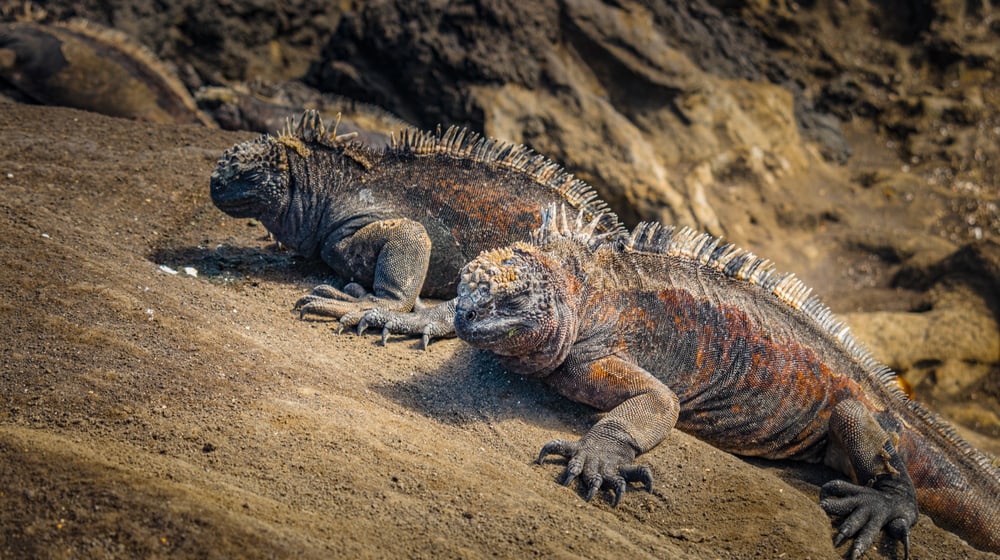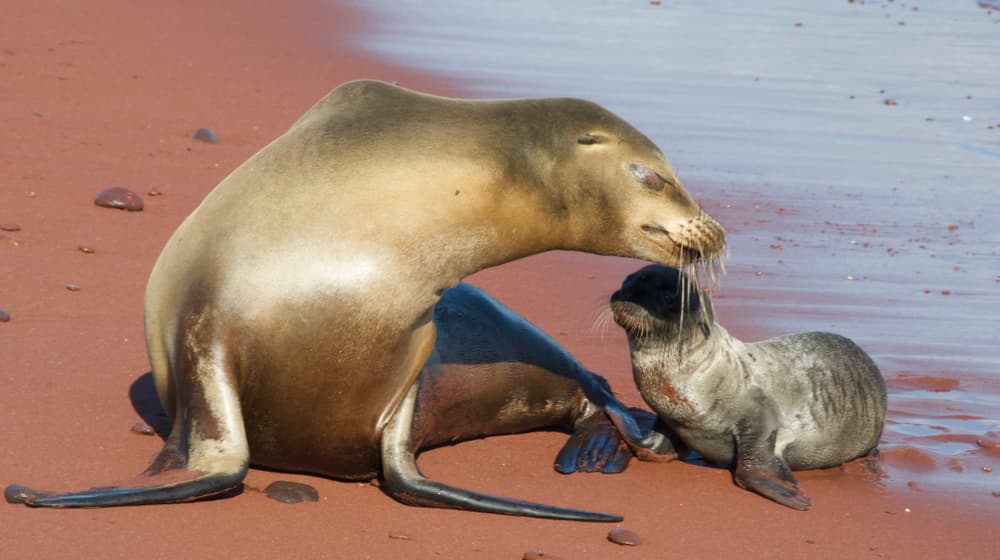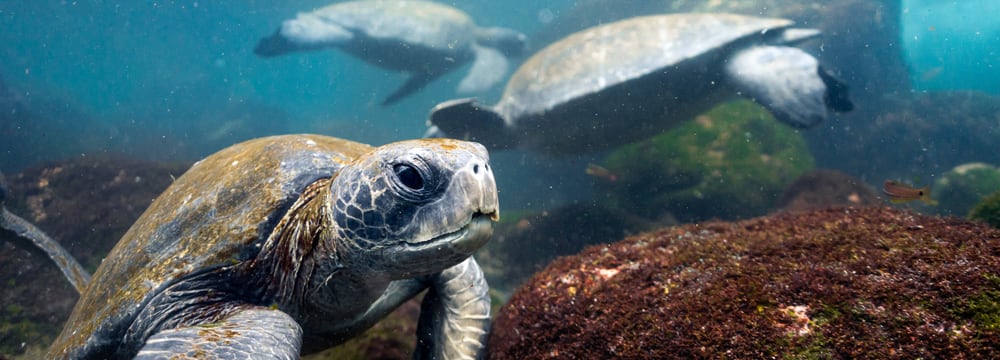
Drones to protect Galapagos sea turtles
The Galapagos giant tortoises, legendary for the archipelago, are not the only ones threatened with extinction. Their cousins, the sea turtles, are also endangered, according to the International Union for Conservation of Nature (IUCN).
In the Galapagos, the Pacific green sea turtle (Chelonia mydas) is most often seen. According to the IUCN, this species of sea turtle is threatened with extinction due to population decline. It is the only species of sea turtle to reproduce in the Galapagos.
Very common in the Galapagos Marine Sanctuary, they often have a darker, slightly more domed shell. Their extremities are also darker than those of most Pacific green sea turtles. For this reason, they have sometimes been considered a separate species, sometimes referred to as the black sea turtle (Chelonia agazsizii), but this view is now disputed. These animals are thought to be a subspecies (Chelonia mydas agassizii) of the Pacific green sea turtle.
The green sea turtle is also known as the soup turtle, giving a clear indication of its former preferential use by man. However, since 1988, trade in eggs, meat and live or dead green sea turtles has been banned under the Washington Convention on International Trade in Endangered Species of Wild Fauna and Flora (CITES). Contrary to what you might think, the name green sea turtle refers not to the brown to olive-green color of its shell, but to the color of its body fat. Indeed, adult green sea turtles are exclusively herbivorous, feeding on sea grass, algae or sea lettuce leaves, which they can tear off and chew with their serrated jaws. Only the young are carnivores, meaning they eat meat. Their diet includes crabs, shellfish, and jellyfish.
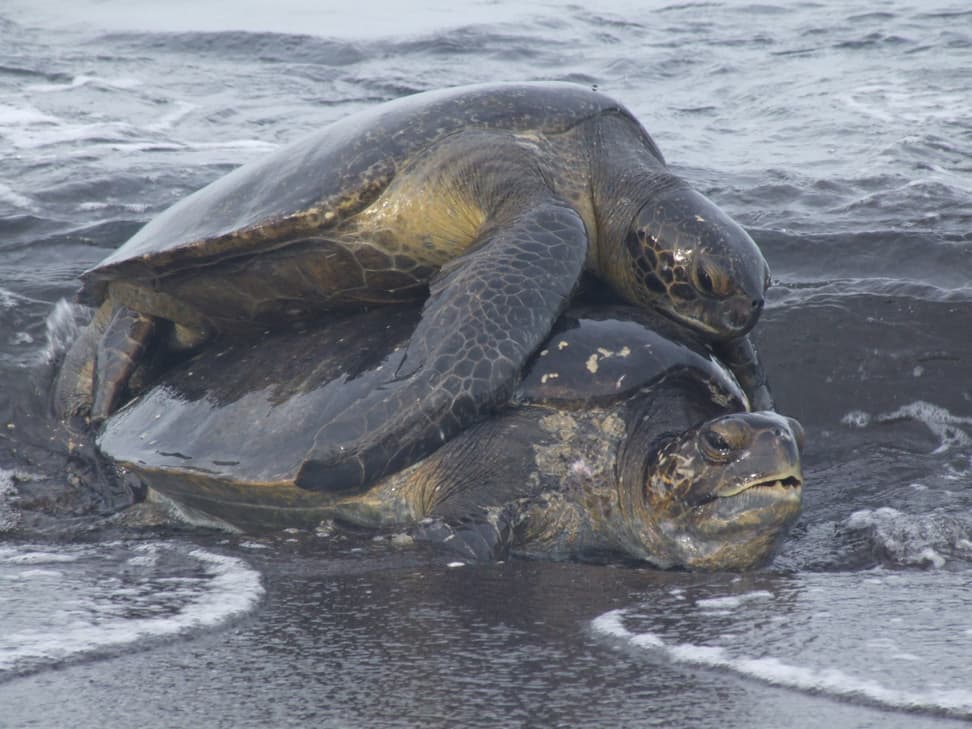
Mating green turtles ã Paquita Hoeck
When sea turtles reach sexual maturity, between the ages of 25 and 35, they return to their natal waters to reproduce. To do so, they travel long distances (over 2,600 km), guided by their internal compass, which orientates itself on the earth's magnetic fields, and by their good eyesight, which enables them to orientate themselves according to the position of the sun or the movement of the waves.
A few weeks after mating, the females return to the beaches where they hatched to lay their eggs. It is thought that the animals return to the beaches where they were born because they find good conditions there for their offspring.
Numerous threats
The tiger shark is the main predator of adult green sea turtles. Fresh hatchlings are hunted by a much larger number of animal species, including crabs, seabirds, large fish, and marine mammals. In addition, cats that have returned to the wild also seek out eggs and young turtles.
Another major threat to sea turtles is man. Increased boat traffic leads to terrible shell injuries, loss of limbs and often death. Fishing also threatens sea turtles, as they are often accidentally caught in fishing nets or become trapped in them with their extremities. As a result, they are unable to come to the surface to breathe and drown miserably.
The Galapagos remains a popular tourist destination. In the last ten years alone, visitor numbers have risen by over 50%. This translates into a sharp increase in boat traffic for island shopping, transport, or diving and snorkeling excursions. All this contributes to the dramatic increase in sea turtle injuries and deaths.
Tourist activities such as beachcombing, kayaking, and snorkeling trips along the coast or from beaches where green sea turtles lay their eggs affect the animals. Noise and excessive beach activity modify sea turtle habitat and can cause behavioral disturbance or, in the worst case, migration.
Another significant threat comes from microplastics stored in the sand. These tiny particles give the sand a darker color, leading to faster heating and higher temperatures. This is fatal, as the sex of young turtles is determined by breeding temperature. The higher the temperature, the more females hatch. Females are certainly important, but if there are mainly female turtles, they can't reproduce in sufficient numbers to ensure the survival of the species.
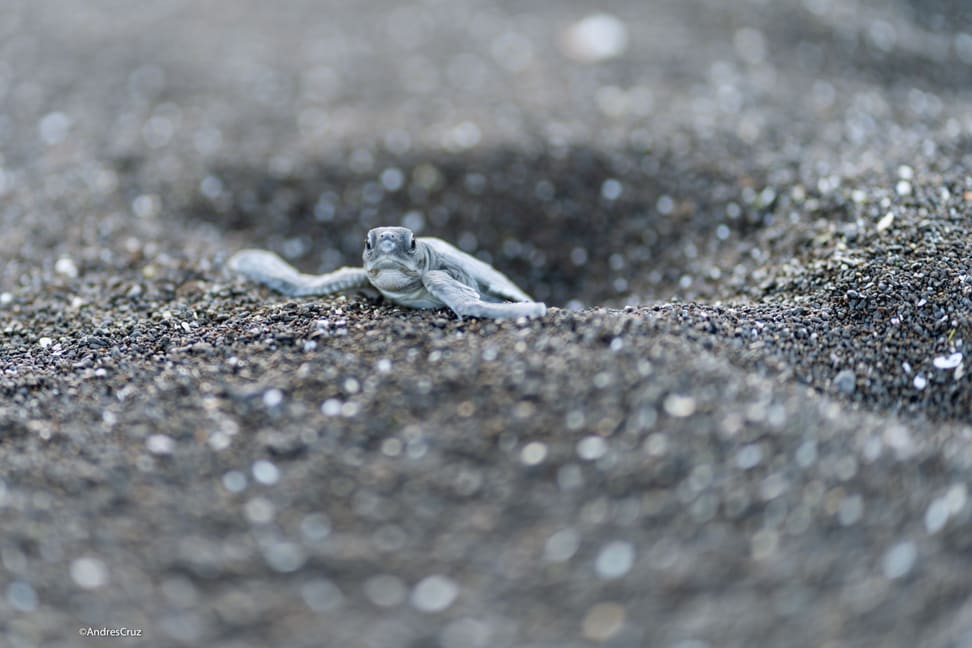
A young sea turtle leaves the nest ã Andres Cruz, CDF
Help comes from the sky
A team of researchers from the Charles Darwin Research Station, in collaboration with the Galapagos National Park Authority, wants to find out if and how human presence affects sea turtles. For the past two years, a team of researchers has been using drones to monitor sea turtles in the famous tourist spot of Tortuga Bay. The use of drones ensures that the sea turtles are not disturbed. In this way, researchers can not only record the number of animals on the beach and in the water, their visual condition, and activities, but also boat traffic and tourist activities on site. As the study began in the absence of tourists (due to the Covid-19 pandemic), we also have representative comparative data on animal behavior when there are hardly any people in Tortuga Bay.
This year, tourist numbers have returned to pre-pandemic levels. It is therefore particularly important to continue the study this year. It will provide us with current, reliable data, which we can then use as a basis for making tourist activities in the Galapagos more sustainable and less dangerous for sea turtles, and thus guaranteeing their habitats and survival.
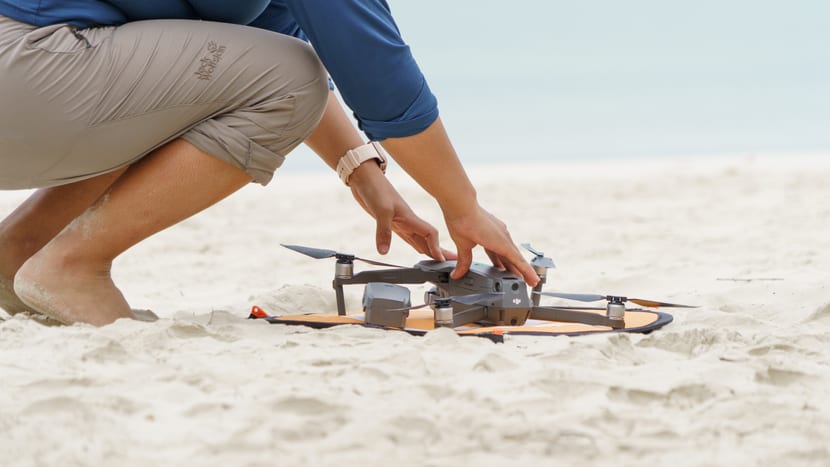
Drone alignment and data collection ã Joshua Vela, CDF
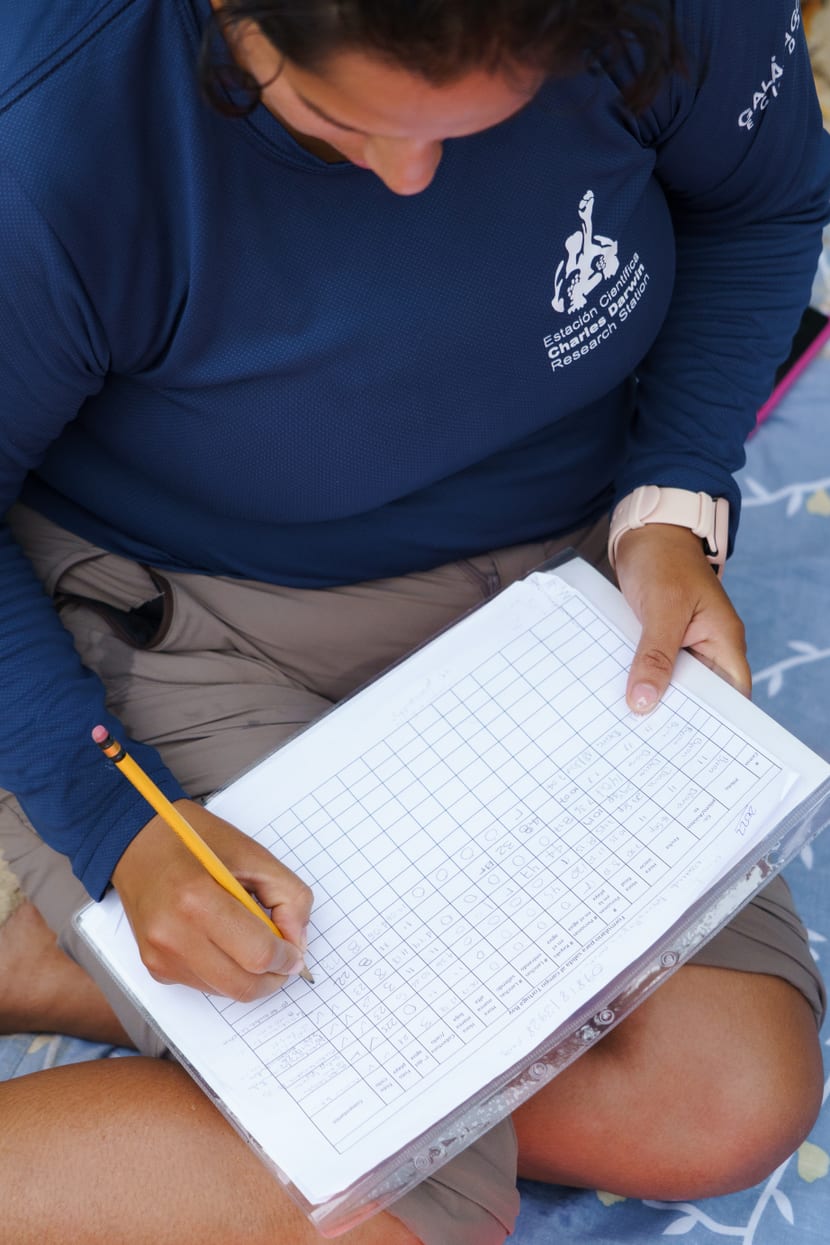
Help us
Help us preserve the natural habitat of green sea turtles. This is the only way to guarantee the long-term survival of these interesting animals for thousands of years.
Your donation will help ensure that the green sea turtles of the Galapagos bring smiles to the faces of many other people.
